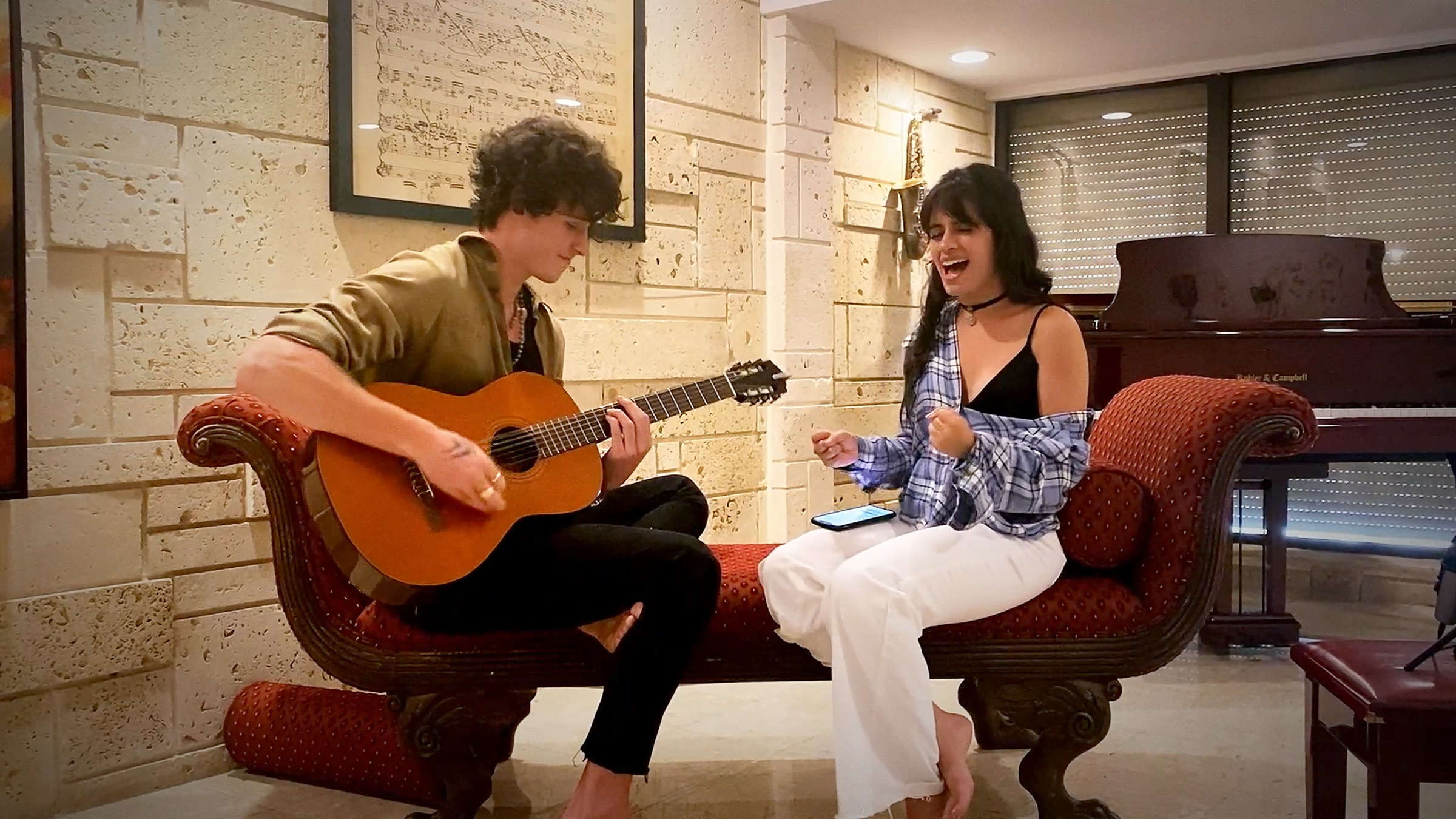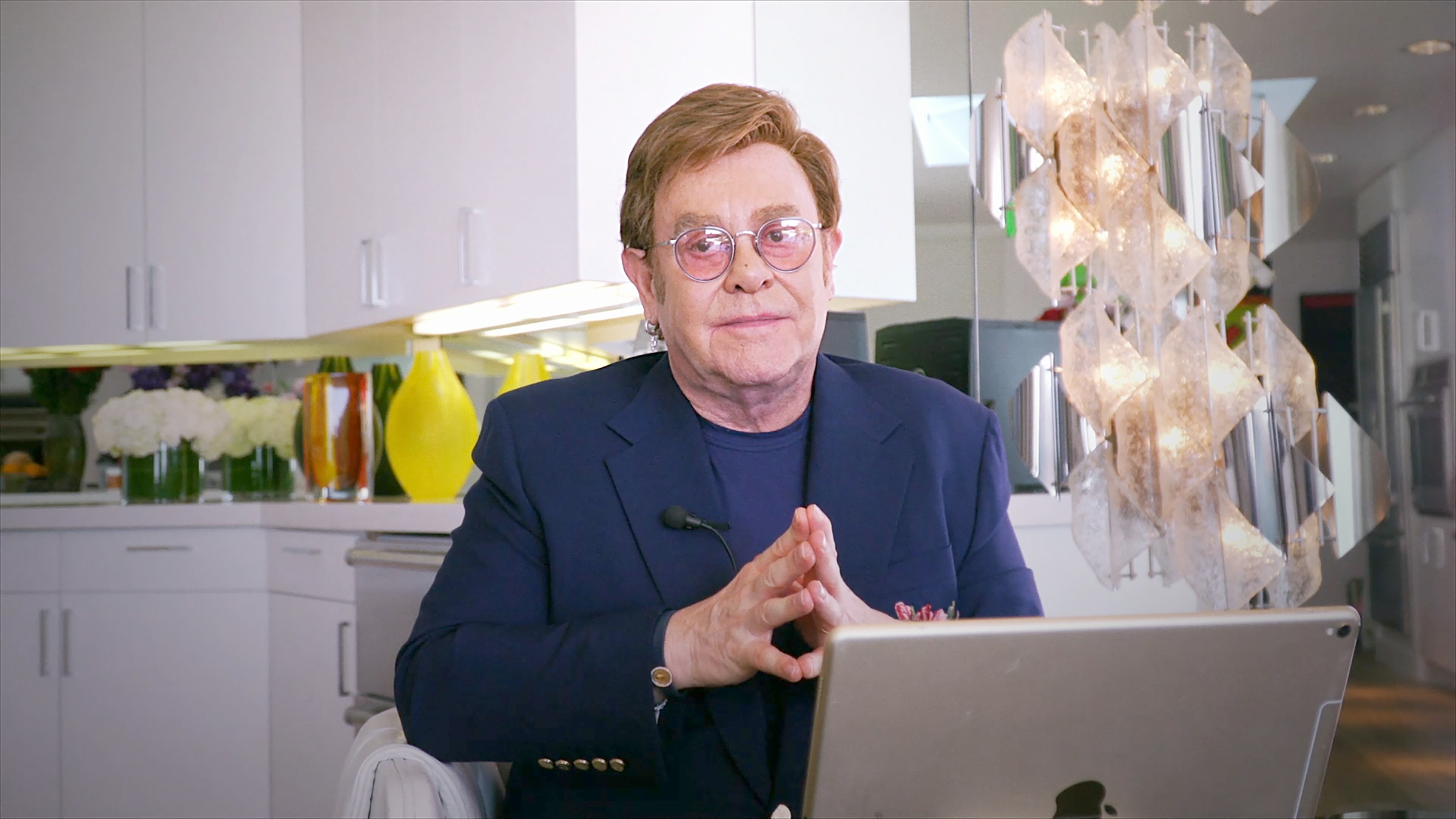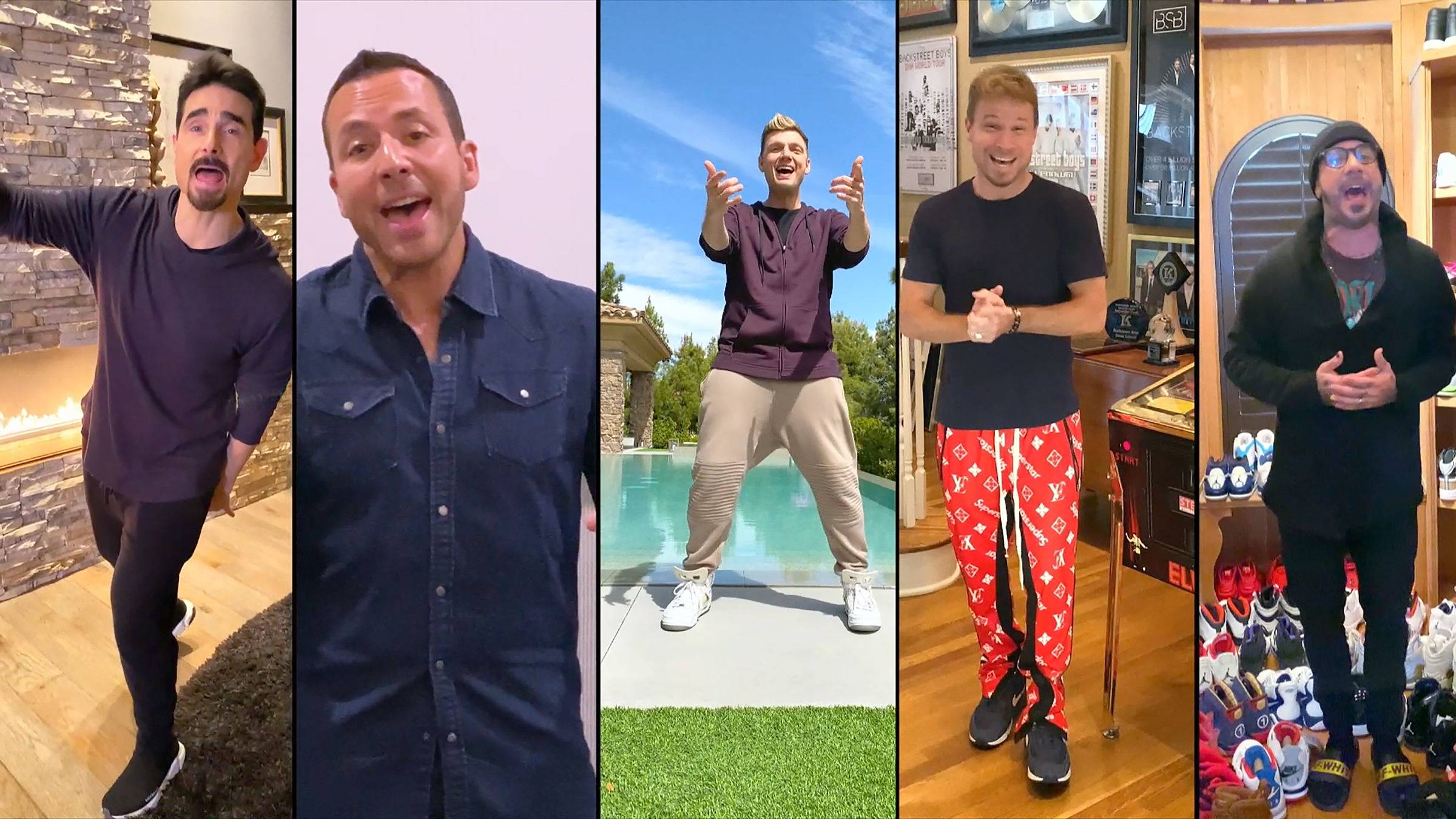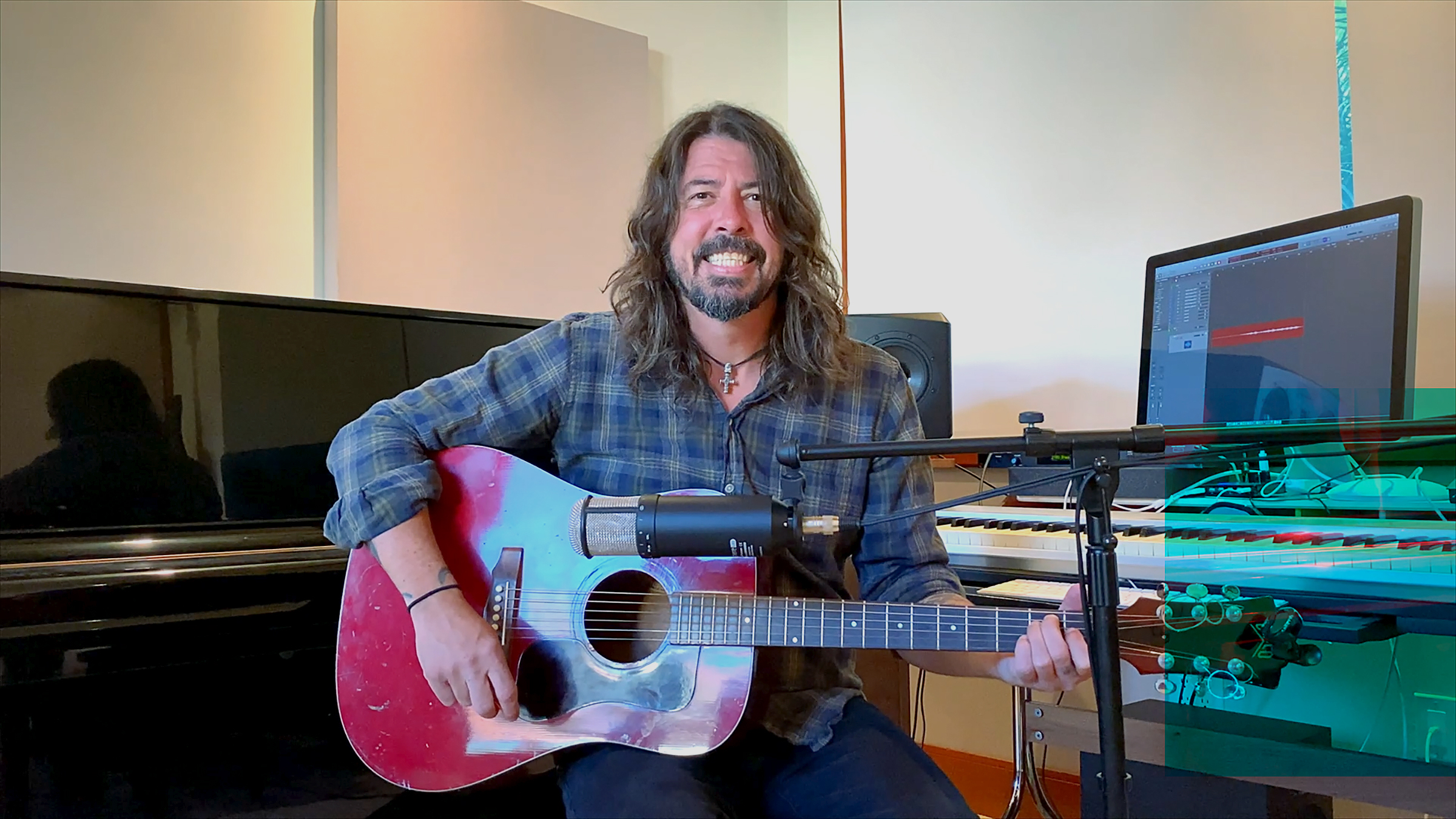Fox, iHeart Execs Reveal Secrets Behind ‘Living Room Concert’ Performances (EXCLUSIVE)
By Michael Schneider
LOS ANGELES (Variety.com) –
(UPDATED with more details from executive producer Joel Gallen.)
As recently as last Tuesday, just three artists had signed on to “Fox Presents the .” But after a week of scrambling and all-night editing sessions, the producers and executives behind the special managed to put together a one-hour event on Sunday night that attracted at least 8.7 million viewers across multiple networks, and has so far raised more than $8 million.
It was a lo-fi production that producer Joel Gallen and the teams led by Alternative Entertainment president Rob Wade, iHeart Media president of entertainment enterprises John Sykes and national programming president Tom Poleman managed to splice into a broadcast-quality telecast.
Elton John hosted the “Living Room Concert for America,” with his husband, David Furnish, shooting him via iPhone. Other performers included Backstreet Boys, who crooned their signature song “I Want It That Way” from five different locations; Dave Grohl, who performed from Hawaii; Billie Eilish and her producer brother, Finneas; Shawn Mendes and Camila Cabello, collaborating from home in Miami; Tim McGraw, singing from his outdoor pool diving board; and Mariah Carey, belting out “Always Be My Baby” from her New York home studio.
“I wouldn’t have guessed ten days ago that we’d be putting on a concert in primetime with no planning and no notice and pulled it off that way,” said Fox Entertainment CEO Charlie Collier. “This is a moment where bringing people together, if we can do it, is really important.”
Originally, Fox was scheduled to air the “iHeartRadio Music Awards” on Sunday night from the Shrine Auditorium in Downtown Los Angeles. That event was canceled earlier this month as it became apparent that, due to the spread of the coronavirus pandemic, public gatherings would be halted.
After that, two weeks ago, Wade and Sykes began discussing the idea of creating a special from the living rooms of artists — but were hesitant at first, given the uncertain mood of the nation.
“Fox was pushing us to do it in April,” said Gallen. “I insisted and said we shouldn’t do it, unless we did it on March 29, because I knew other shows were going to be out there, and right now, everybody was feeling the same way in the country, we didn’t know what the future held. We felt like we had to do it. They did not think we could pull it off. That was Friday the 21st, and Fox gave us the weekend to see if we could book anybody. By Monday we had enough to give Fox the confidence we could pull it off.
“I know you have to be very reactive and work as close to the moment as possible. I had a clear vision of how I thought it would go and be captured in an intimate way, but if the artists were game for putting a little bit of extra effort into it, we could make this thing look pretty good,” he added. “It didn’t have to be so down and dirty but a balance that’s intimate, you’re in people’s houses and at the same time it can look and sound good.”
Wade said he wasn’t sure at first if a special like this would strike the right tone. “Will people forgive the quality of those performances and how we’re going to give performances? Is it going to be the right thing to do this show?” Wade said. “We decided no, it wasn’t at that point. That was two weeks ago on Sunday. It just didn’t feel quite right.
“And then, in the space of two days, it did,” he added. “It changed so quick. It was also this idea that we could do some good. You have a huge broadcast platform like Fox, and you have a huge national radio platform like iHeart. We’ve got a bit of an obligation here as well. [It] isn’t just, like, ‘oh, we want to make this show.’ It was like, ‘what can we do?’”
Sykes said the idea was to offer a night of entertainment, but also highlight the health care workers, firefighters and emergency medical professionals on the front line. “These are doctors who are sleeping in their garage so they don’t infect their families,” Sykes said. “People are making masks on their sewing machines and in Tennessee. We wanted to shine a light on those heroes.”
The next step was convincing artists to sign on — not an easy task at first, especially when many of these performers are adjusting to their own new at-home realities. And of course, there was the question of how the amateur video might look and sound on TV.
“I think the biggest part of the communication to the celebrities was [saying], ‘look guys, you’re going to sound good, and you’re going to look good,’” Wade said. “And you’re going to do good as well, because obviously there’s a sensitivity to getting the tone right. To get the tone right and to convince people that this is the right thing to do was difficult.”
Added Sykes: “Once they heard that we were going to respect their safety and not send a crew of ten into their apartments or their homes — that we were going to respect that they were following protocol — they relaxed and said, ‘this is going to be a great thing.’ They’re at home, and they want to get their music out and they can’t play live.”
“Living Room Concert for America” aired on 800 of iHeart’s 880 radio stations and across all of Fox Corp.’s networks. That includes Fox News, which has notably drawn criticism for downplaying the pandemic in its early days (and continues to parrot White House talking points). But nonetheless, Collier said Fox Corp. CEO Lachlan Murdoch championed the special.
“Lachlan saw the importance of the benefit and told us to run with it,” he said. “It ran on every property we have, including Sports and Deportes and truly this was from the top down. Lachlan saw this opportunity and it was produced in entertainment but every division stepped up and promoted the hell out of it and aired it.”
The $8 million in donations came from viewiers, as well as Procter & Gamble, which donated $500,000 (and which Fox Corp. matched). Additionally, Fox employees, corporate partner PwC and YouTube also contributed.
YouTube has streaming rights to “Living Room Concert for America” for the next three days, and the special will also continue to live on Fox’s VOD platforms. With the additional online exposure, the producers hope to continue to raise money for the two charitable foundations chosen for the show: Feeding America and First Responders Children’s Foundation.
Here are a few more behind-the-scenes tidbits about Sunday night’s special from Wade, Sykes and Gallen:
Most of the special was shot on iPhones.
Gallen and his team found ways to experiment with iPhone cameras to make the special more broadcast-ready. “We thought, most people have iPhones, and if all the artists, let’s say they had an average of two iPhones in their household, we could get a nice wide shot and a nice closeup between the two,” he said. “If everyone puts it in landscape mode and shoots it in 4K, all of a sudden you’ve got a pretty good looking thing there. We talked it through with every artist, and also me and my team put together a one-sheet saying how to maximize production values out of their iPhones.”
Sykes added that he thought the phones could look almost as good as a “Super Bowl camera if they’re programmed the right way. It’s a leap of faith when an artist goes, ‘I’m going to go on national television, and you’re going to shoot me with an iPhone,’ because we have to do business with these artists 365 days a year. The fact that they all came back and said ‘I love the quality, I looked good and I sounded good,’ it galvanized the relationship.”
Gallen, Fox and iHeart relied on the artists’ friends and family members to shoot the performances. In some cases, several of their iPhones were set up at different angles, and two takes were recorded. (The goal, they said, was to improve on the static Instagram Live mini-concerts that have become in vogue the past few weeks).
“Most artists did two takes, because they wanted to make sure they had the best performance, audio wise,” Gallen said. “But for the most part I would use one take or the other, and if they had two or three cameras I would edit between them.”
This required plenty of back-and-forth with producers. “The legalities of doing performances and making sure the words are right, that there’s no cussing, and there’s no branding or a piece of artwork in the background that’s not cleared… it goes beyond just pointing and shooting,” Wade said. “It’s when you’re doing all this remotely that makes it incredibly difficult.”
Everyone’s audio either came from the phone, or microphones in their house. Those microphones can be attached to an app and synced to the iPhone video, so that the recording is higher quality than typical iPhone audio. In other cases, it was simple: Sykes said Grohl’s Hawaii house is next door to his album producer, which made finding equipment easy.
“It was strokes of luck like that, but [there were cases like] Camila and Shawn, who are just in their house in Miami, and they’re like, ‘it’s just the two of us, we got a couple of iPhones, how do we do this?’” Wade said. “And they’ve got no filmmaking experience. So each performance had its own challenge.”
Added Sykes: “A lot of artists were watching this on Sunday because this is, at least for the time being, the new normal of how we’re going to produce things, and how artists are going to get exposed as they’re trapped in their homes like everyone else.”
Elton John volunteered to host because he doesn’t have a proper piano where he’s currently living.
Originally, Fox and iHeart were in talks with an unnamed comedian to host the special. But when that fell through, it so happened that John was interested in participating — but didn’t have a piano in the house where he, Furnish and their family are currently living. John instead volunteered to host (although in the end, used one of his kids’ keyboard to play).
Elton John’s husband did such a good job filming that he got a segment producer credit.
“I have one of my favorite emails of all time from David Furnish, where he’s relaying to the showrunners the different camera angles that he took and the sound quality. It was basically the kind of email you’d normally get from a field producer,” Wade said. “He was like the cameraman, producer and director of that whole thing, but it’s David Furnish! I didn’t know he was going to get a segment producer credit but that was in the end.”
juggled taping her performance while watching her kids.
“Mariah Carey has two kids, and obviously no one has any help right now because of the virus. You want just have your family around,” Sykes said. “So she had to actually keep the door of her studio in her apartment open, while she watched her kids as she sang.”
This is still Mariah Carey, however, so viewers may have noticed the front of her hair blowing a bit: it turns out she has a little fan on her to add to the performance. “Mariah nailed it in one take,” Gallen said.
The execs said those at-home touches were a hallmark of the special: McGraw singing as his dogs were running around his pool; ditto Green Day’s Billie Joe Armstrong, whose audio was punctuated by the jingle of his dog’s identification tags. “You saw in Kevin from the , his kids were running around, so you just saw these real-life stories we had to basically work around because they were just doing it all themselves,” Sykes noted.
The Backstreet Boys’ performance initially sounded too good for the special.
Sykes credits Gallen for editing the five boy banders into a cohesive piece. For viewers who thought it sounded a bit too good for a video shot in five different chunks, “it was actually too good we heard the first tape,” Sykes said. “That’s how well they did it. So we actually had to bring up the voices in their rooms so people knew that they were really singing. This band is so good and so well rehearsed. Each artist shot their scene and it was synced up, and then the editor cut in their part of the song.”
Added Gallen: “They were singing their hearts out live. They blend pretty nicely on the chorus… We asked them each to do it with a close-up and a head-to-toe so we could see some dance moves, because we said, how can do Backstreet Boys without some dance moves?”
The special was also inspired by MTV’s “Unplugged” series.
Sykes was an MTV Networks executive during the heyday of “MTV Unplugged,” which was executive produced by Gallen.
“Where we took an artist off a big, powerful stage and put them in an intimate setting, still high quality, and you just connected in a whole different way because television is an intimate medium,” Sykes said. “Just seeing the way sings in every moment. There’s no amplification to compete with it.”
Demi Lovato texted her performance to producers.
“Demi Lovato, she was an example of someone who did a little intro and then a little bit of ‘Skyscraper,’ but she shot it in portrait mode, and we wanted all the performances to be shot in landscape mode,” Gallen said. “But her song was so beautiful and so haunting that we just said, let’s find imagery that goes with it, and it just worked out great. We put a box in the middle of her. She texted us her video. So it was a low-res, not necessarily shot in the right format, but it didn’t matter, because her voice still shined through. That became a beautiful surprise of how that came together.”
The special was locked less than five hours before air.
“I kept saying to Rob, ‘can we have another three hours?’” said Sykes, who added that no one slept Saturday night as they raced to finish the special.
Said Wade: “A really big team of people did this, on the iHeart side, Joel Gallen, our marketing teams, our legal teams. The artists themselves, and Elton… we did this I feel for the right reasons, of trying to raise some awareness, trying to help some people, and at the same time I’m glad we could entertain people, which is important as well.”
Gallen said he had a video chat with his editor, who was ten miles away from him. “That’s how we were trying to deliver the show,” he said. “There were very few people who left their homes, but my editor had to, because he needed the equipment, and my post-production supervisor had to, because he had to deliver the show. But they all took extra precautions and took social distance.”
This production was of the moment, but Wade hesitates to call it a new normal.
“People are still going to hanker to have celebrities and to have performances at a high quality,” Wade said. “We will undoubtedly come out of this period with new learnings and new production techniques, which will be more efficient probably both in the way we film it and then the financial way we film stuff… I think the key is you should have a very high standards in whatever TV production you’re doing. You’ve got to make iPhone footage look amazing, and you can.”
Said Gallen: “We never could have pulled this off ten years ago, where everybody stayed where they were, all the performers and production people. We used Zoom a lot, emails and texting a lot, so we all stayed connected that way but somehow it all came together.”






